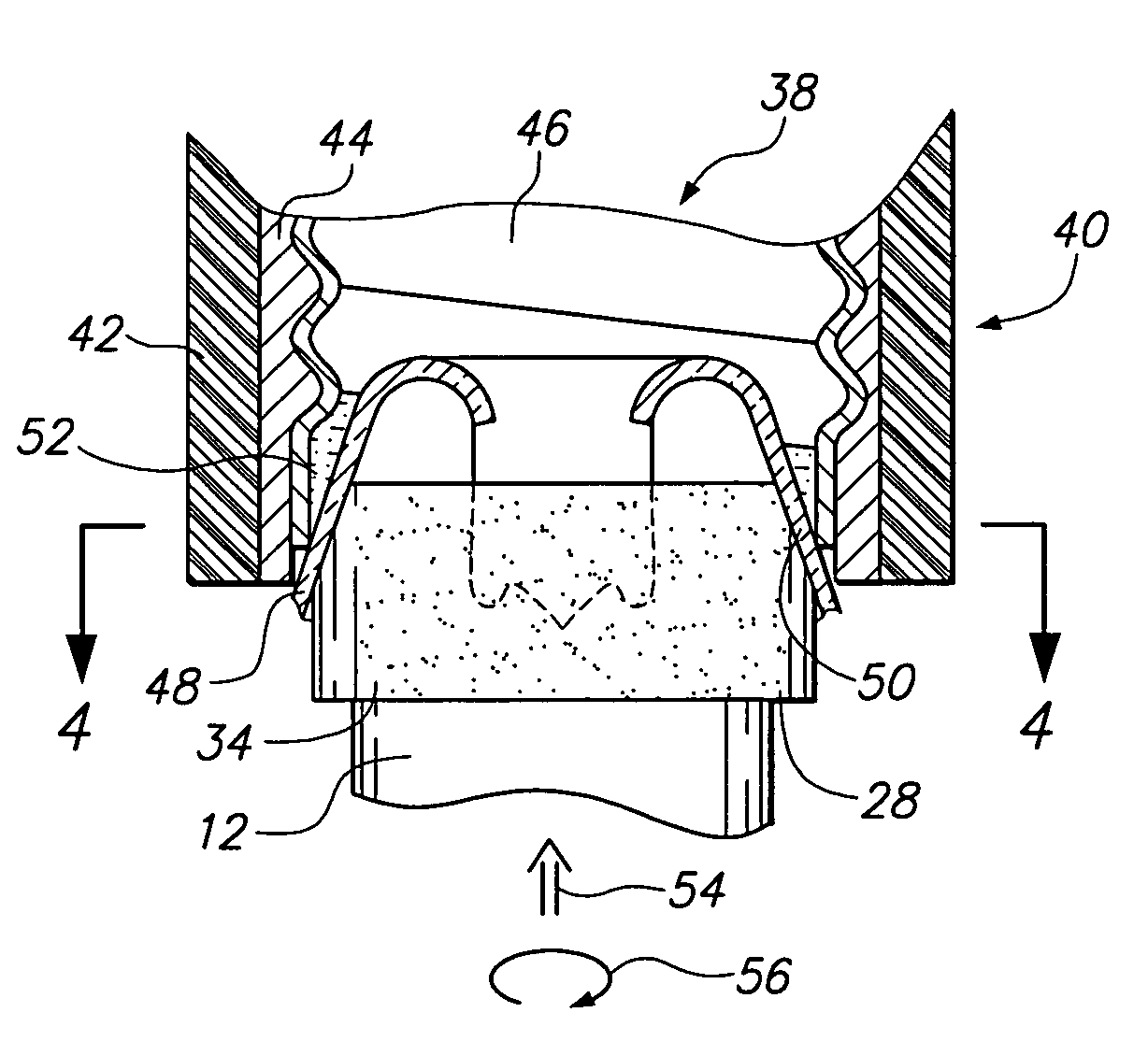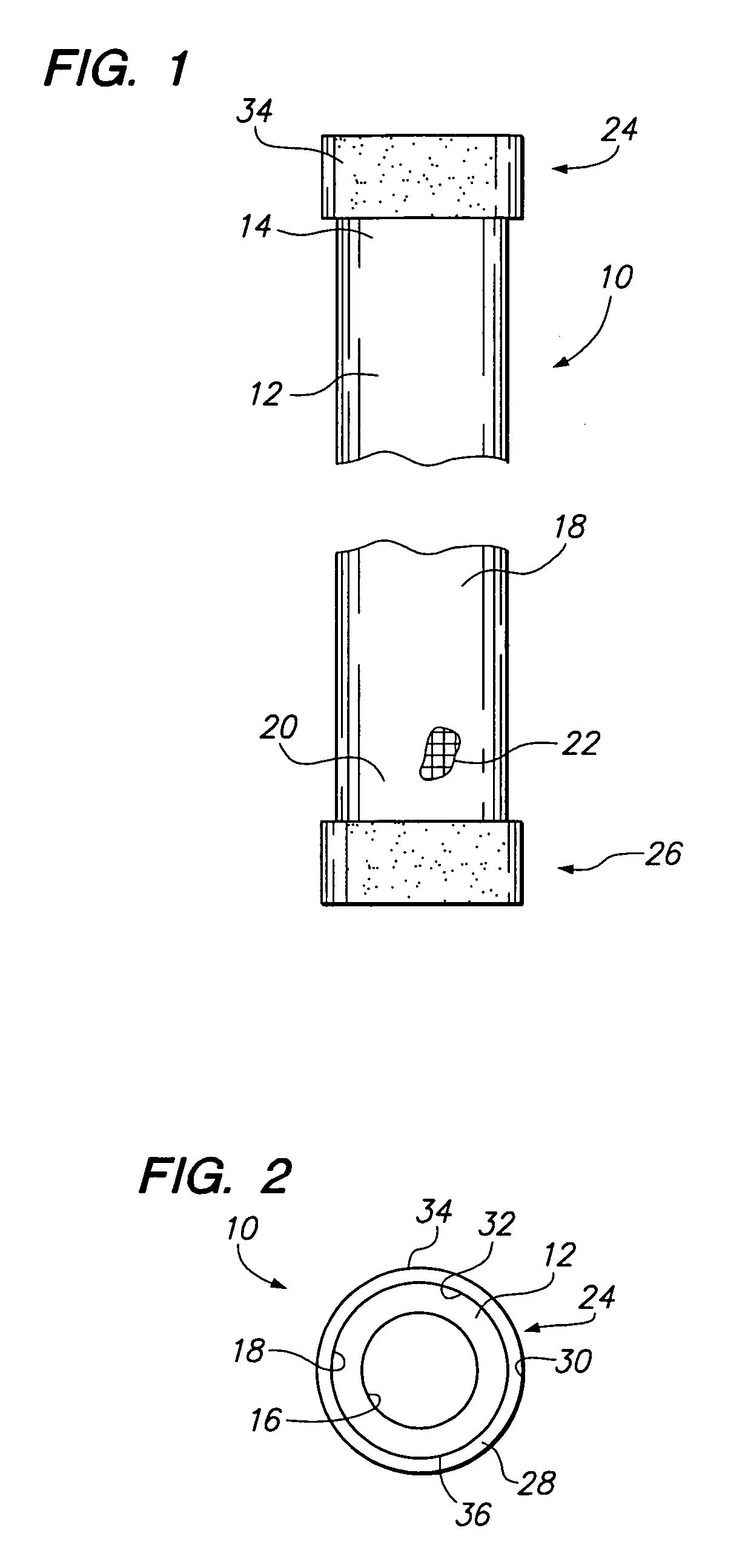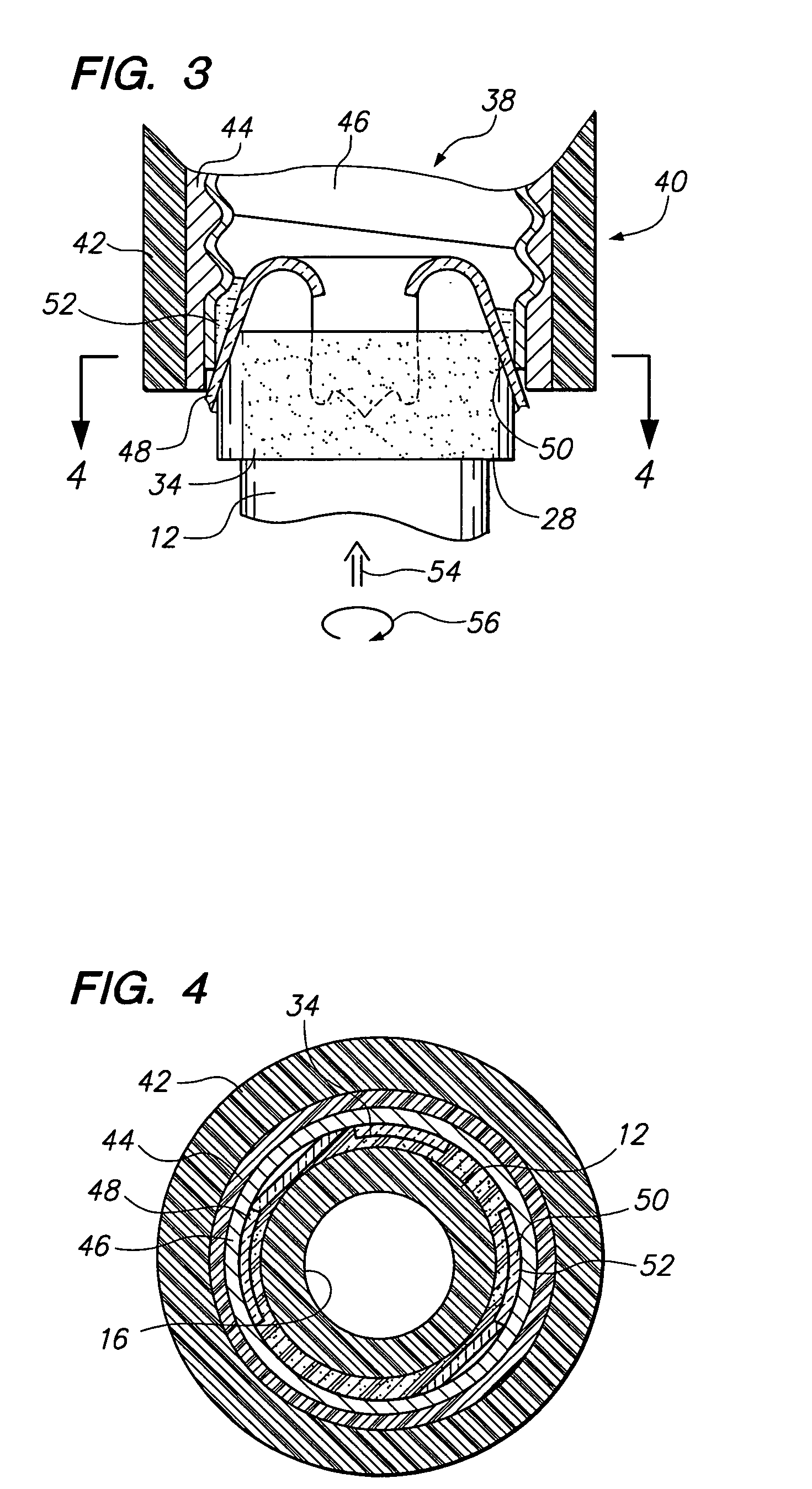Device for removing a broken light bulb from a socket
a technology for removing a broken light bulb and a socket, which is applied in the direction of wrenches, screwdrivers, electric discharge tubes/lamp manufacture, etc., can solve the problems of difficult removal, inconvenient removal, and seizing of the base of incandescent bulbs within the socket,
- Summary
- Abstract
- Description
- Claims
- Application Information
AI Technical Summary
Benefits of technology
Problems solved by technology
Method used
Image
Examples
Embodiment Construction
[0028]Various aspects of the present invention are revealed from the following detailed description of the preferred embodiments and should be referenced to the prior delineated drawings.
[0029]The embodiment of the invention as a whole is depicted in the drawings by reference character 10, FIGS. 1 and 2. Device 10 includes as one of its elements an elongated member 12 which may take the form of a hollow cylindrical tube formed of a non-electrically conductive material such as polyvinyl chloride. Member 12 is formed with an end portion 14 possessing a diameter or transverse dimension which is compatible with the use of device 10, which will be described in greater detail hereinafter. With reference to FIG. 2, it may be observed that member 12 includes an inner surface 16 and an outer surface 18. With reference again to FIG. 1, it should be seen that member 12 further includes an end portion 20. It is intended that end portion 20 be gripped by the user of device 10. In this regard, kn...
PUM
 Login to View More
Login to View More Abstract
Description
Claims
Application Information
 Login to View More
Login to View More - R&D
- Intellectual Property
- Life Sciences
- Materials
- Tech Scout
- Unparalleled Data Quality
- Higher Quality Content
- 60% Fewer Hallucinations
Browse by: Latest US Patents, China's latest patents, Technical Efficacy Thesaurus, Application Domain, Technology Topic, Popular Technical Reports.
© 2025 PatSnap. All rights reserved.Legal|Privacy policy|Modern Slavery Act Transparency Statement|Sitemap|About US| Contact US: help@patsnap.com



